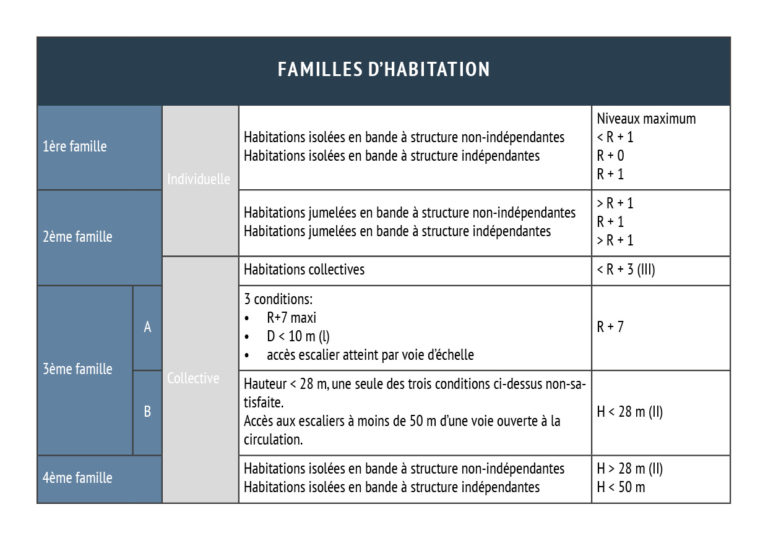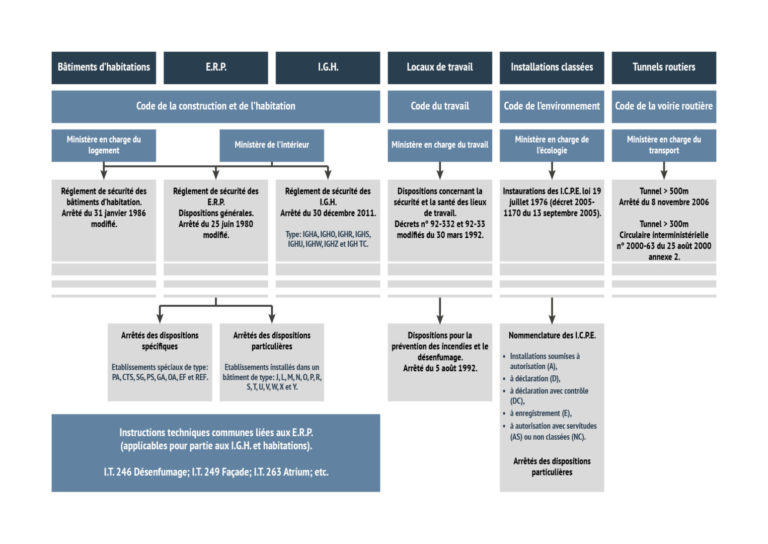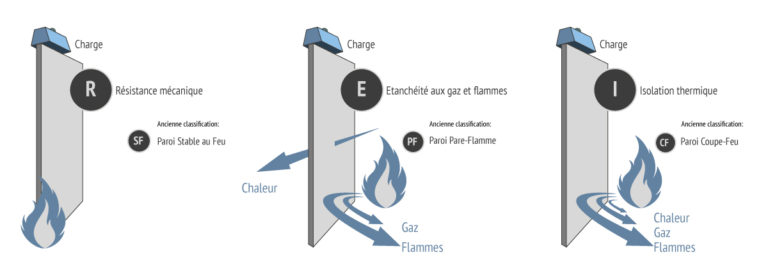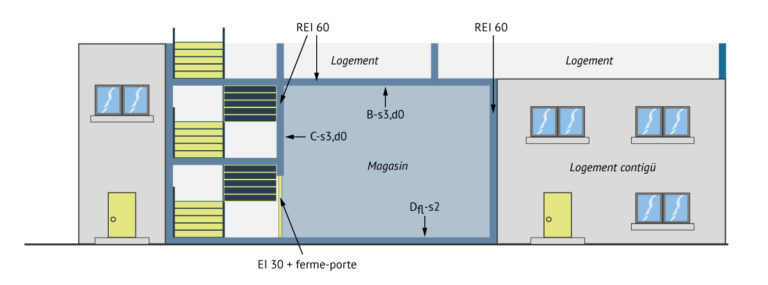Fire regulations in Buildings
Need to know
Various official documents govern the rules of fire protection in France
- Orders of June 25, 1980 (amended) and June 22, 1990 (amended): fire safety regulations in the ERP
- Technical Instruction N ° 249 (IT249) relating to façades (modified)
- Order of January 31, 1986 (as amended): fire protection of residential buildings.
Working groups bring together the relevant ministries, the testing laboratories, the fire brigade, the control offices and any professional organization concerned with fire protection or construction with the approval of the Ministry of the Interior.
The most regulated buildings are establishments receiving public (ERP) but some residential buildings (3rd family B and 4th family) are also subject to significant material constraints related to fire risk.
An ERP is a building, a room or an enclosure where people are admitted either freely, or for remuneration or participation of any kind, or in which are held meetings open to all coming or on invitations, paid or not. The classification of an ERP makes it possible to modulate the security requirements according to the risks of the various buildings.
Type of building
- J: childcare facilities for the elderly and persons with disabilities
- L: audition, conference, meeting, show or multi-purpose rooms
- M: sales stores, shopping centers
- N: restaurants and drinking places
- O: hotels and boarding houses
- P: dance halls and playrooms
- A: educational institutes, schools, training centers, holiday centers, recreation centers without accommodation
- S: libraries, documentation centers and archives
- T: exhibition halls
- U: care institutions
- V: worship establishments
- W: administrations, banks, offices
- X: covered sports facilities
- Y: museums
Building Categories
They are characterized by the number of people potentially admitted to the establishment. Nevertheless, each activity is part of a way of calculating the number of people, especially for the threshold of the 5th family. Buildings are classified in the 5th category (small buildings) according to the size of the public only. This number must not exceed a threshold defined for each type of building.
- 1st category: above 1,500 people,
- 2nd category: from 701 to 1,500 people,
- 3rd category: from 301 to 700 people,
- 4th category: less than 301 people, with the exception of establishments included in the 5th category,
- 5th category: establishments covered by Article R. 123-14 in which the number does not reach the figure set by the safety regulations for each type of operation.
The first four categories constitute the first group. The second group (Small buildings) is constituted only by the buildings of the 5th category.
Reaction to fire
The reaction to fire of the material defines the behavior of a material or product used which, in the presence of a flame or a rise in temperature, brings or not a food to the fire and its spread.
Spread of fire on the facade
Fire control on the facade responds to the problem of spreading a fire in multi-storey buildings with a fire emerging outside to reach and penetrate the upper levels.
Fire resistance
The fire resistance of the structure expresses the time during which a building element (wall, floor, partition, etc.) subjected to a fire, retains the sufficient characteristics enabling it to perform the function for which it is intended. The standard fire resistance test method uses three performance criteria to establish fire resistance ratings (R, E & I for bearing capacity, fire resistance, and thermal insulation, respectively).
General case for an ERP
Fire resistance
In all cases, an ERP must be isolated from a third building (example: housing above a business) by a partition (wall or floor) REI 60. As part of the development of a store in a collective building for existing residential use, it is necessary to check, if necessary by a specialized design office, the fire resistance of the walls and ceilings of the store (separating between store and housing).
ERP reaction to fire
DCB rules floors-walls-ceilings: floors must be classified Dfl-s2, vertical walls C-s3, d0, ceilings B-s3, d0




